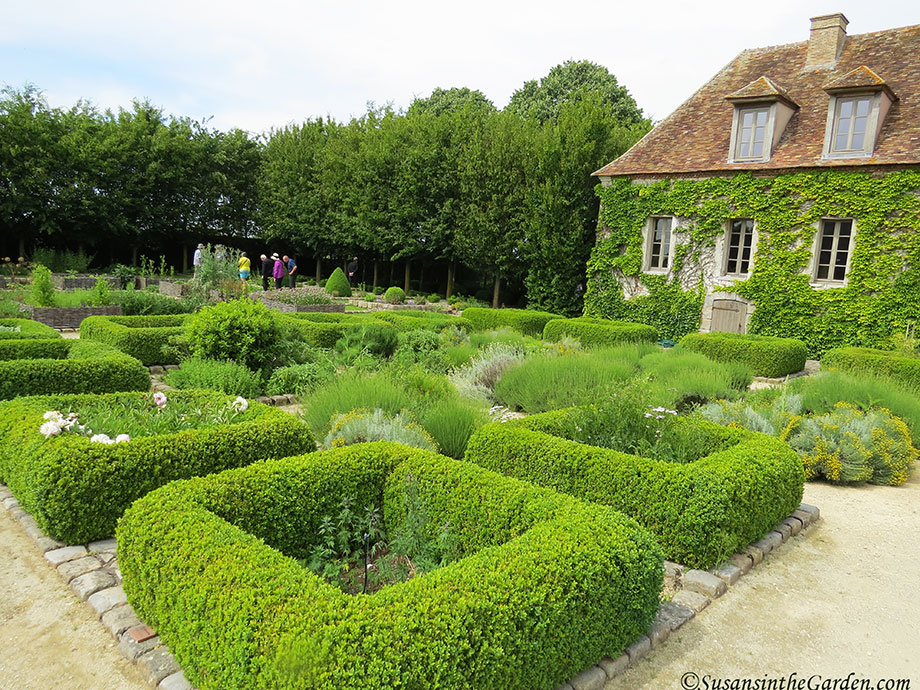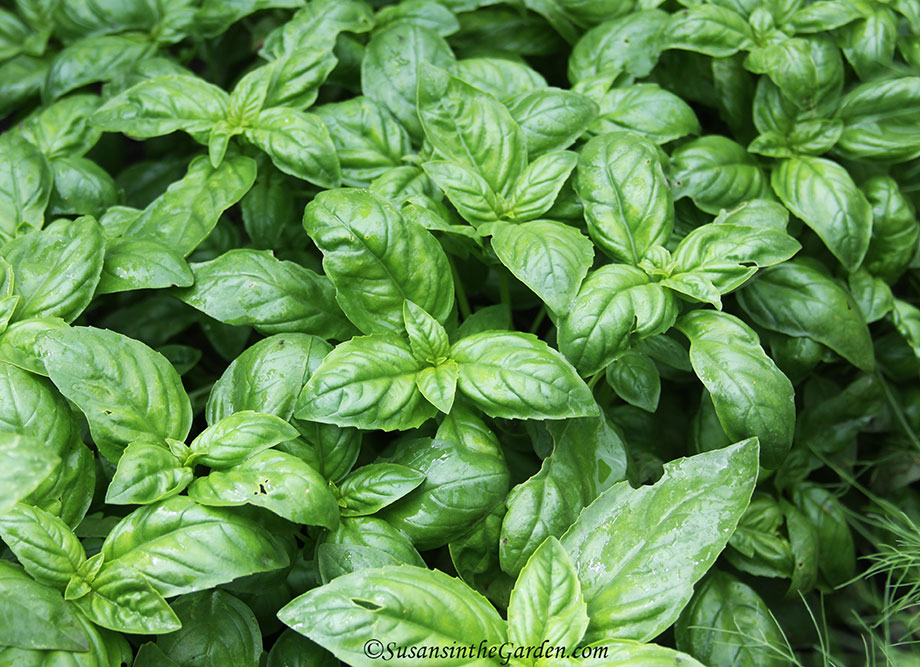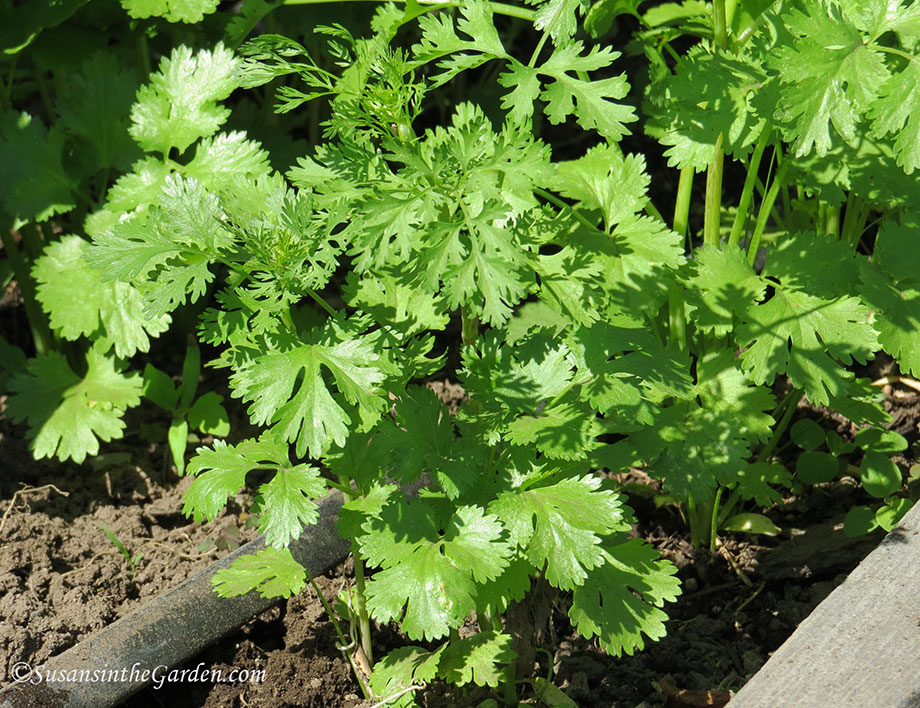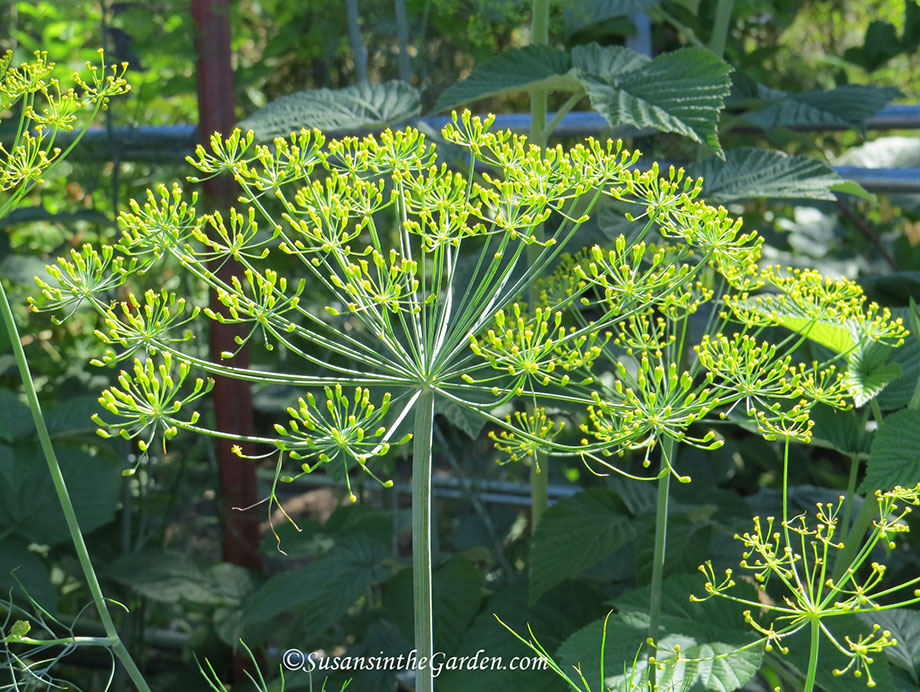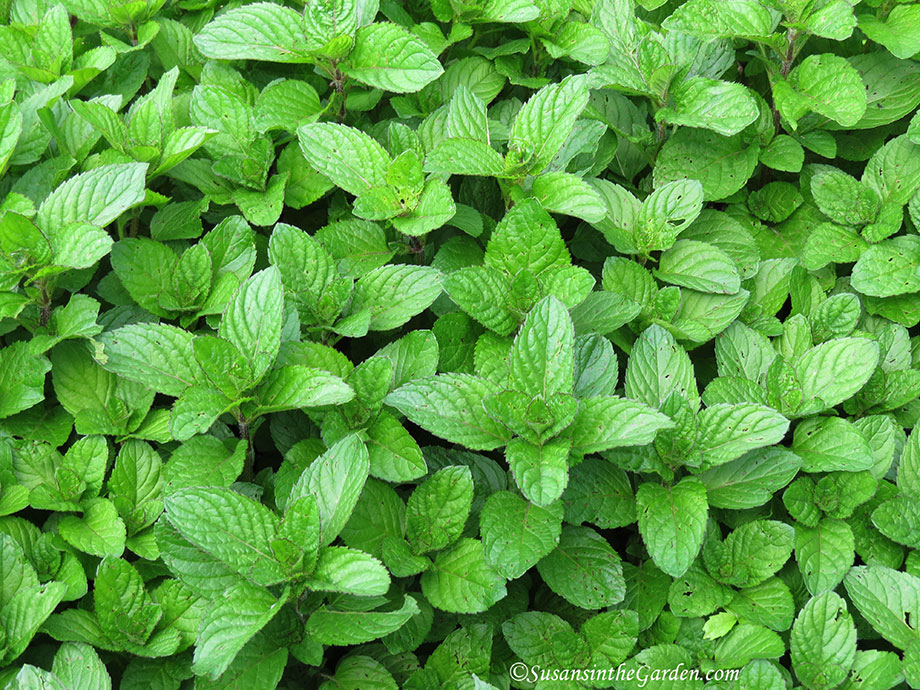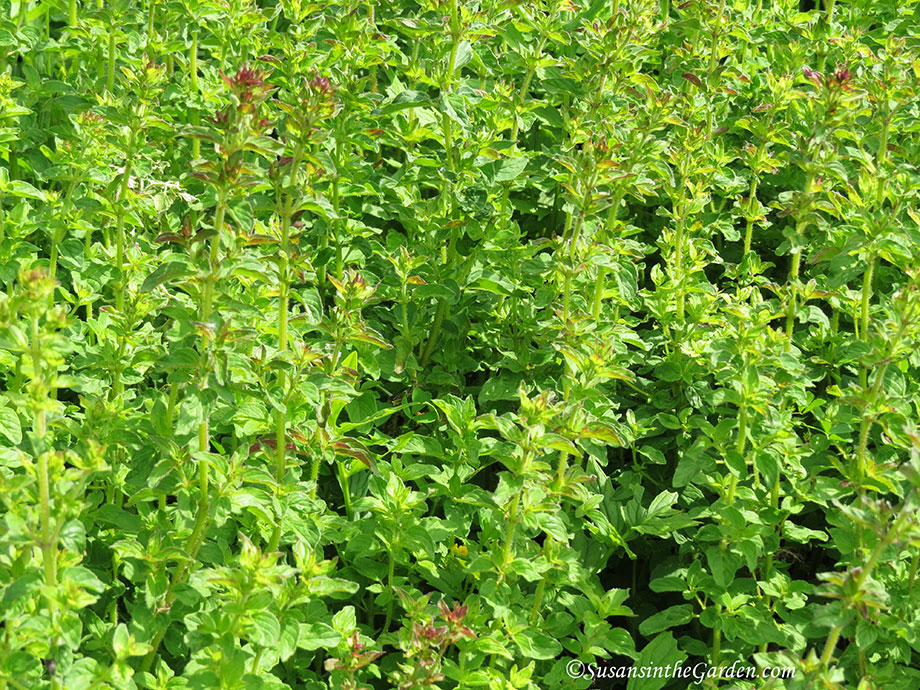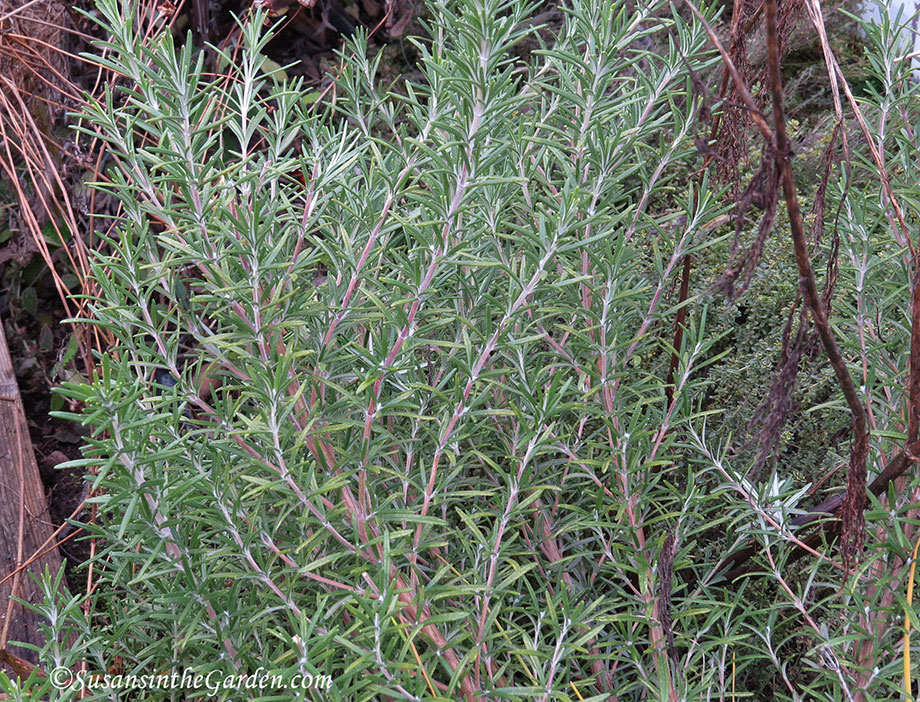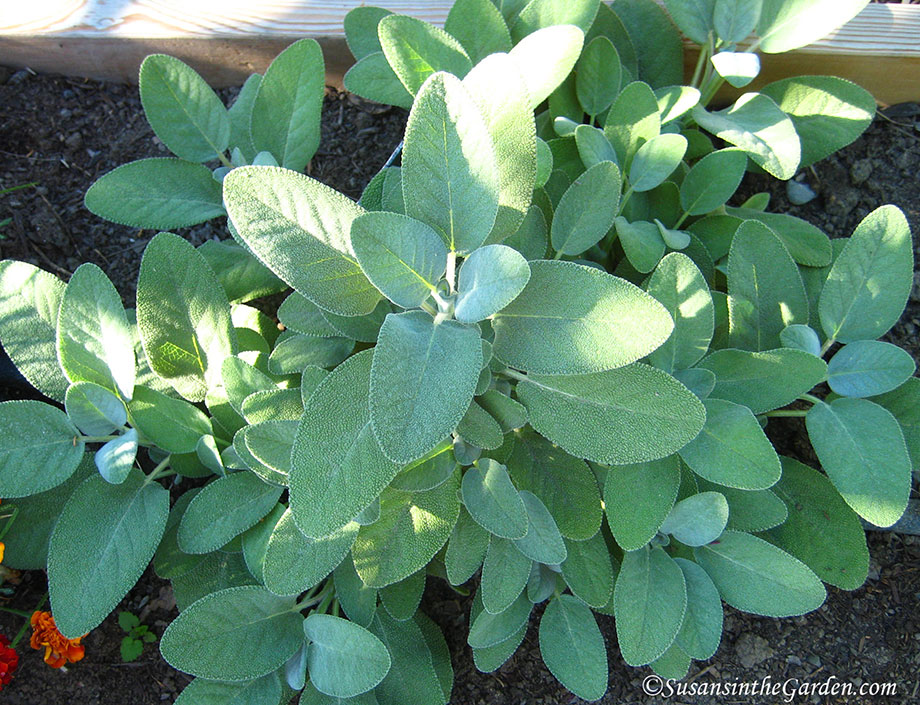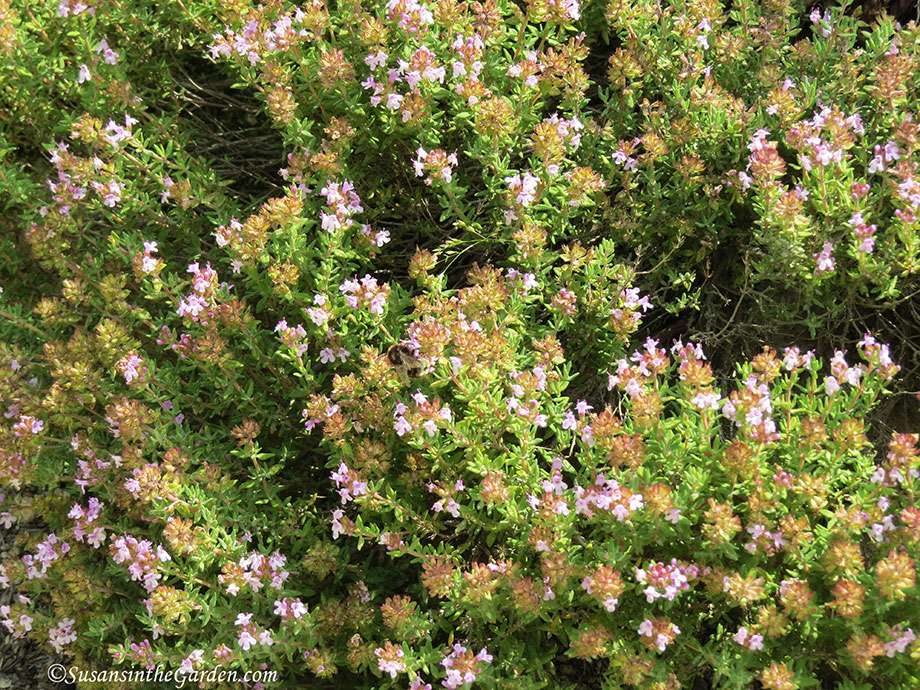Herb Growing Guide
A lot of culinary herbs are perennials, meaning they’ll come back year after year. Because of this, plant them in a bed where they won’t be disturbed — other than for harvesting activities, of course. You can also divide them when they get too large and share them with friends; or perhaps your friends can get you started by sharing some of theirs with you!
For most of the recommendations below, a plant or two should serve your needs. In addition, it’s quite easy to find nice herb plants at garden centers and nurseries. But if you wish to grow some of the more specialty types, you will likely need to start them from seed.
To harvest herbs during the season, just snip off what you need with a pair of kitchen scissors. And don’t forgot to dry herbs to use during the fall and winter months. This can be done by hanging bundles of branches upside-down in a dark location such as a basement or storage closet; or drying them in a food dehydrator, microwave oven or an oven set below 180 degrees F. Store dried herbs in airtight containers such as zipper-lock bags or jars in a dark location; try to use them within a year.
The following culinary herbs will make a useful addition to your garden:
BASIL (Ocimum bacilicum)_ This annual herb is a must for every garden. You just can’t beat having your own fresh supply of yummy leaves to use on pizzas or in Italian dishes, or for making homemade pesto. Even though basil is easy to grow, be forewarned that it won’t be happy growing in chilly conditions. If you live in a region that takes a while to warm up in the spring, take your time sowing those seeds. For example, in my zone 5b garden, I don’t even think of planting it until Memorial Day. It really does make a difference.
How much will you need? That depends on how much you enjoy using basil in your cooking but most folks plant several. Sow the seeds 1/4 inch deep either indoors about one month before the last expected frost, or sow them directly in the garden well after all danger of frost is past. Space seedlings 8 inches apart. Any time you notice the plants are developing flower buds, pinch them off so they will continue to grow leaves.
Susan’s Picks: ‘Aurelia’, ‘Dark Opal’, ‘Genovese’, ‘Italian Large Leaf’, ‘Lettuce Leaf’, ‘Sweet Thai’
CHIVES (Allium schoenoprasum) _ This perennial herb has multiple petite, onion-like leaves and attractive pink blossoms that are a huge hit with pollinators. Just be aware that if you let the flowers go to seed, you’ll end up with enough plants to share with your entire neighborhood! You will likely only need two or three plants so remove flowers before those seeds have a chance to mature. Since chive flowers are edible, you can use them in salads or to season a dish.
Sow seeds indoors or directly in the garden, or purchase a seedling or two from a garden center. Wait 60 days before harvesting from plants sown from seed, or 30 days after transplanting a nursery-grown plant in your garden. Plants should be spaced about 8 inches apart in the garden and also grow well in containers, both indoors and out.
The mild flavor of chives makes a pleasing addition to dips, soups, stews, baked potatoes, casseroles and side dishes. The flowers are also edible and fun to use in salads. To preserve chives for later use, either dehydrate them in a food dehydrator until they are thoroughly dry or freeze leaves by placing them in a freezer bag.
Susan’s Picks: ‘Dolores’, ‘Purly’, ‘Staro’; there are also garlic chives available.
CILANTRO (Coriandrum sativum) _ This annual herb is most commonly used in tomato salsas and Asian-inspired dishes. The foliage of this plant is referred to as cilantro, while the seeds (which are edible) are called coriander.
While it’s possible to find cilantro seedlings in garden centers, the plants don’t take kindly to being transplanted; consider sowing seeds instead.
Cilantro grows best under cooler conditions and will bolt to seed once temperatures get quite hot. If you plan to add cilantro to your homemade salsa, sow the seeds directly in the garden about 50 days before you expect ripe tomatoes. That way, the cilantro leaves will be at their peak at the same time.
Sow the seeds 1/2 inch deep and about 2 inches apart. As the plants grow, thin them to 4 inches apart. Keep the plants well-watered throughout the season to avoid stressing them, which can cause them to bolt to seed prematurely.
Susan’s Picks: ‘Bac Lieu’, ‘Calypso’, ‘Caribe’, ‘Santo’, ‘Slow-Bolt’
DILL (Anethum graveolens) _ Dill is exceedingly easy-to-grow annual herb that also attracts pollinators to the garden. As a member of the carrot family, it’s a wonderful host plant that will attract butterflies. There are a lot of culinary uses for dill, such as in tuna salad, on grilled fish, or in sauces and casseroles. They add a tasty flavor to homemade pickles and relishes as well.
You will likely only need a few plants. Direct-sow seeds 1/4 in deep about 2 inches apart, with an eventual spacing of 6 inches. Keep the plants well-watered. Snip leaves as needed. When the plants go to flower, use them to make pickles or save the seeds once they have dried.
Susan’s Picks: ‘Bouquet’, ‘Dukat’, ‘Goldkrone’, ‘Hera’, ‘Long Island Mammoth’
MINT (Mentha) _ While mint makes a delightful addition to some dishes, be aware that all members of the mint family have the potential to take over your garden. As long as you confine them to a container, they should behave themselves. Mint is a perennial herb. If you are interested in growing a few different types, a single plant of each should meet your needs. Plant them in 12-inch diameter pots.
Susan’s Picks: Apple, Chocolate, Lemon Balm, Orange, Peppermint, Spearmint
OREGANO (Origanum vulgare) _ One of the most recognizable seasonings in Italian and Greek cooking is oregano. While this plant is very easy to grow, it’s important to know that it’s a member of the mint family. As such, it has the potential to spread throughout your garden. Consider growing oregano in a container or raised bed to confine them to a manageable area.
Oregano is a perennial herb so consider purchasing a plant or two from a garden center. Space plants about 10 inches apart. In addition to using fresh leaves in cooking, you can also dry oregano leaves to preserve some for your pantry.
Susan’s Picks: ‘Greek’, ‘Italian’
PARSLEY (Petroselinum crispum) _ Parsley is a biennial, which means that it has a lifespan of about two years. The first year, it establishes a good root system and produces some foliage; the next year, it continues to grow, then blooms, sets seed and dies.
Most gardeners only need two to three plants and purchase seedlings. If you’re looking for a hard-to-find cultivar, start seeds indoors 6 to 8 weeks before transplanting them into the garden. Be sure to provide them with regular water throughout the growing season. Harvest outer sprigs of parsley as needed, so the plant will continue to grow. Parsley is quite cold-tolerant although it might not survive colder winters.
Susan’s Picks: ‘Giant of Italy’, ‘Fidelio’, ‘Italian Flat Leaf’, ‘Moss Curled’, ‘Wega’
ROSEMARY (Rosmarinus officinalis) _ Rosemary is a tender perennial, with most cultivars hardy in zones 8 and above (but take note of the ‘Arp’ cultivar below). You should only need a single plant of this highly aromatic herb. In areas where winter temperatures drop below 20 degrees F., it’s possible to transplant your rosemary into a container in early fall and bring it indoors before the temperatures really start to drop.
Another simpler option is to take cuttings from the plant, put them in water indoors and let them take root. Once the cuttings have a nice root system, transplant them into containers filled with potting soil and keep them under lights or on a sunny windowsill. In the spring after the danger of frost has passed, plant them in the garden.
Susan’s Picks: ‘Arp’ (hardy down to zone 5), ‘French’, ‘Irene’
SAGE (Salvia officinalis) _ A perennial herb, sage is often used for seasoning poultry, winter squash, soup, ravioli and casseroles. Its large, gray-green leaves look attractive in the garden and the plants are a breeze to care for. A single plant will likely suffice so consider picking up one from a local garden center. If you enjoy experimenting with different flavors, watch for some of the interesting cultivars.
Susan’s Picks: Common sage, ‘Extrakta’, ‘Fanni’, ‘Pineapple’
TARRAGON (Artemisia dracunculus) _ Tarragon is a perennial herb that grows in zones 4 to 9. A single plant should provide you with enough to meet your needs. The leaves have an interesting licorice flavor and are primarily used for savory dishes. Use fresh tarragon leaves or dry some for future use.
The plants reach about 3 feet in height and cannot be grown from seed so look for starts at garden centers. The plants are deciduous so the leaves will fall off during the fall and winter months. Trim back the plant in the spring to make room for new foliage to grow.
Susan’s Picks: ‘French’
THYME (Thymus vulgaris) _ Thyme is an evergreen herb, which means it doesn’t lose its leaves in winter. These perennial plants are hardy down to zone 5. While thyme is a member of the mint family, I haven’t experienced aggressive spreading except with creeping thyme.
Most herb gardeners find they only require a plant or two for their culinary needs. Let them become established before you start harvesting the sprigs of leaves. They make a delightful seasoning for savory dishes and can be dried for future use.
Susan’s Picks: English, Creeping (groundcover), French, German Winter, Lemon, Orange.

